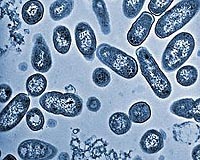 |
Albuquerque NM (SPX) Dec 23, 2009 Sandia National Laboratories will use $4.2 million in American Recovery and Reinvestment Act funds to modify and enhance its existing Battery Abuse Testing Laboratory (BATLab), with the goal of developing low-cost batteries for electric and plug-in hybrid electric vehicles. Sandia's BATLab is internationally recognized as a leader in the field of battery testing to ensure they meet real-world performance requirements. The tests help to determine how much abuse lithium ion batteries can safely handle, including being crushed, pounded with nails and heated to boiling hot temperatures. Sandia tests everything from regular small cells about the size of a laptop computer battery up to full-sized modules and packs weighing several hundred pounds for hybrid vehicles. The $4.2 million in funding is part of a $104.7 million economic stimulus package to further develop the nation's efforts in clean energy and efficient technologies across seven DOE national laboratories. Deputy Secretary of Energy Daniel Poneman made the announcement during a recent visit to Sandia to be briefed on the Labs' capabilities and programs. "As we look to the future and the challenges this nation will continue to face in terms of national security, in terms of energy security, in terms of climate, we can continue to rely on the insights, innovation, technology, dedication and patriotism of the people at Sandia and at our other national laboratories," said Poneman. The nation's first full-scale debut of electric cars that can run up to 40 miles on a single charge is expected late next year, and Sandia has played an instrumental role in ensuring the safety and reliability of the batteries that power those vehicles. The DOE-funded FreedomCAR program turned to Sandia to investigate the possibility of safely using lithium-ion batteries, which have more power and weigh less than the nickel-metal hydride batteries currently being used in hybrid vehicles. But before lithium-ion batteries could be placed in vehicles, extensive safety tests needed to take place. With the recent stimulus funds, the BATLab will be able to greatly increase the number of tests it does. "The equipment and facilities that we currently have allow us to do only one test at a time, so our throughput has been somewhat limited," said Pete Roth, lead researcher for Sandia's FreedomCAR program. "The new equipment and upgrades that we will be able to implement will enhance the amount and range of testing and diagnostics that we can do, and we expect to at least be able to double our throughput." Those upgrades include fire suppression, improved lighting and advanced electrical systems, in addition to new software and analytical equipment to help diagnose battery responses and provide data for manufacturers. Such improved efficiency will allow Sandia to continue to offer increasingly valuable contributions to the nation's FreedomCAR effort. "Pete and his team are already internationally recognized for this work, and this funding will help us to sustain that leadership position into the future as auto manufacturers start to implement these lithium battery modules and packs into their vehicles," said Tom Wunsch, manager of Sandia's Advanced Power Sources R and D group. The $104.7 million ARRA funding is concentrated on three priorities: advancing carbon fiber manufacturing and processing technologies to help reduce the weight of vehicles; developing integrated building systems to reduce U.S. carbon emissions and expanding facilities for fabricating and testing advanced battery prototypes for fuel-efficient vehicles. "It's so terribly important that we keep the nation's work moving in this direction," said Poneman. "We as a nation have relied on the national laboratories since the time of World War II, well over half a century, to keep this nation strong, to keep us at the cutting-edge of science, of innovation in the service of the nation and in the service of the American people. The scientists and engineers who've been working all these years at Sandia are owed a great debt of gratitude by the American people for the tremendous progress they have made in keeping our nation safe." Share This Article With Planet Earth
Related Links Sandia National Laboratories Powering The World in the 21st Century at Energy-Daily.com
 Bacteria used to power simple machines
Bacteria used to power simple machinesArgonne, Ill. (UPI) Dec 16, 2009 U.S. Department of Energy scientists say they've used common bacteria to power simple machines, providing insight for creating bio-inspired energy production. The researchers at the Argonne National Laboratory and Northwestern University said they discovered bacteria can turn microgears when suspended in a solution. "The gears are a million times more massive than the bacteria," ... read more |
|
| The content herein, unless otherwise known to be public domain, are Copyright 1995-2009 - SpaceDaily. AFP and UPI Wire Stories are copyright Agence France-Presse and United Press International. ESA Portal Reports are copyright European Space Agency. All NASA sourced material is public domain. Additional copyrights may apply in whole or part to other bona fide parties. Advertising does not imply endorsement,agreement or approval of any opinions, statements or information provided by SpaceDaily on any Web page published or hosted by SpaceDaily. Privacy Statement |